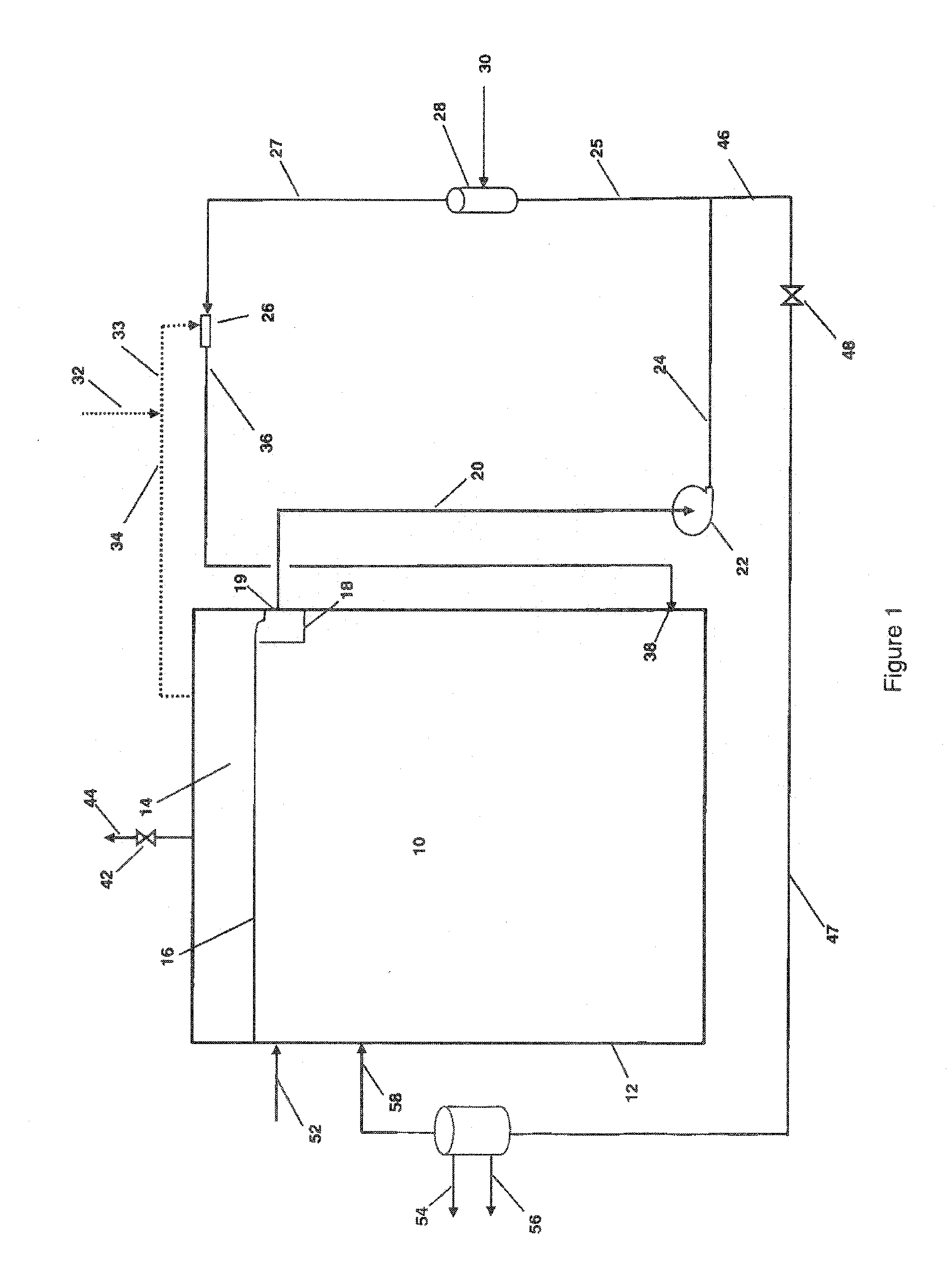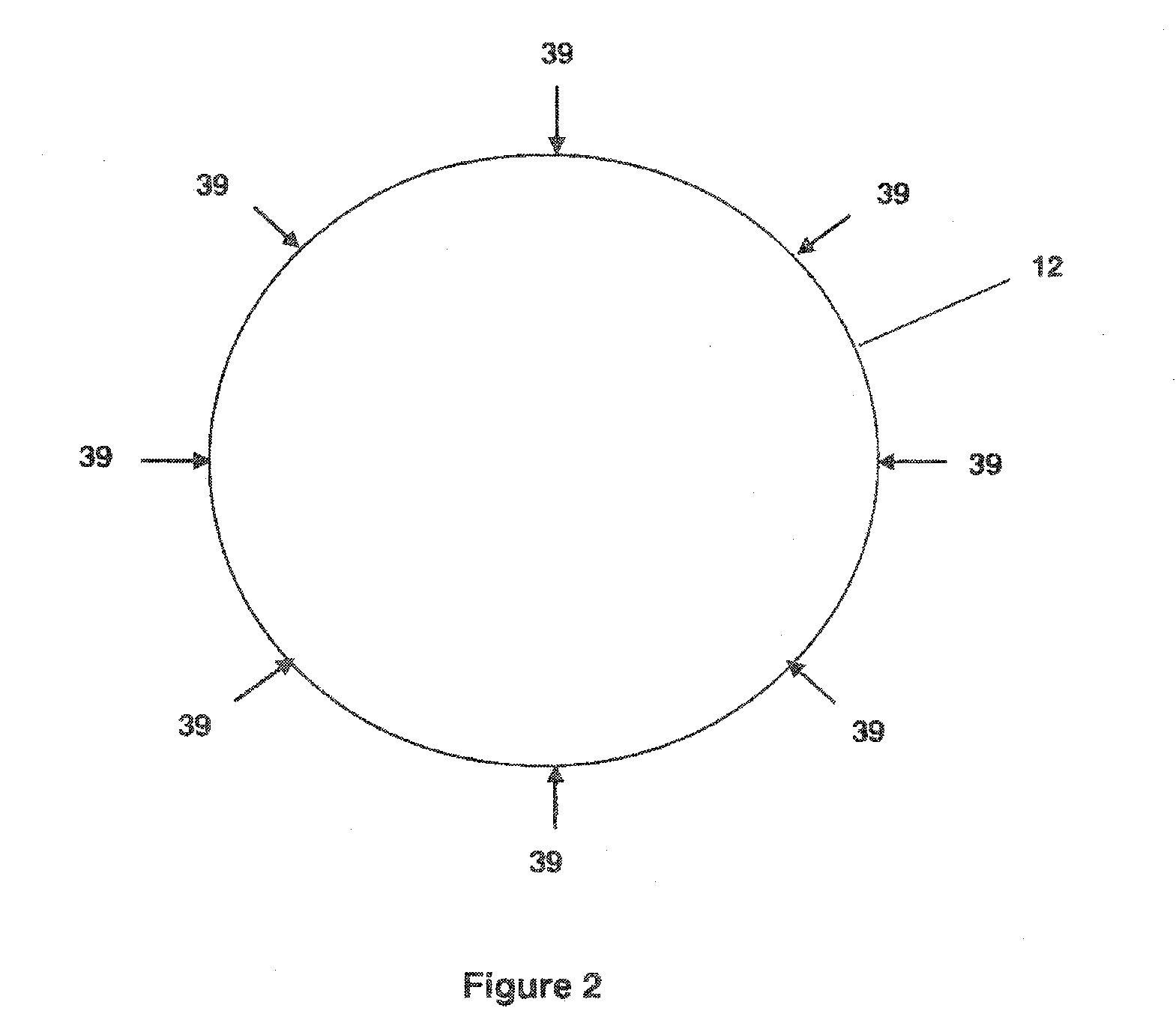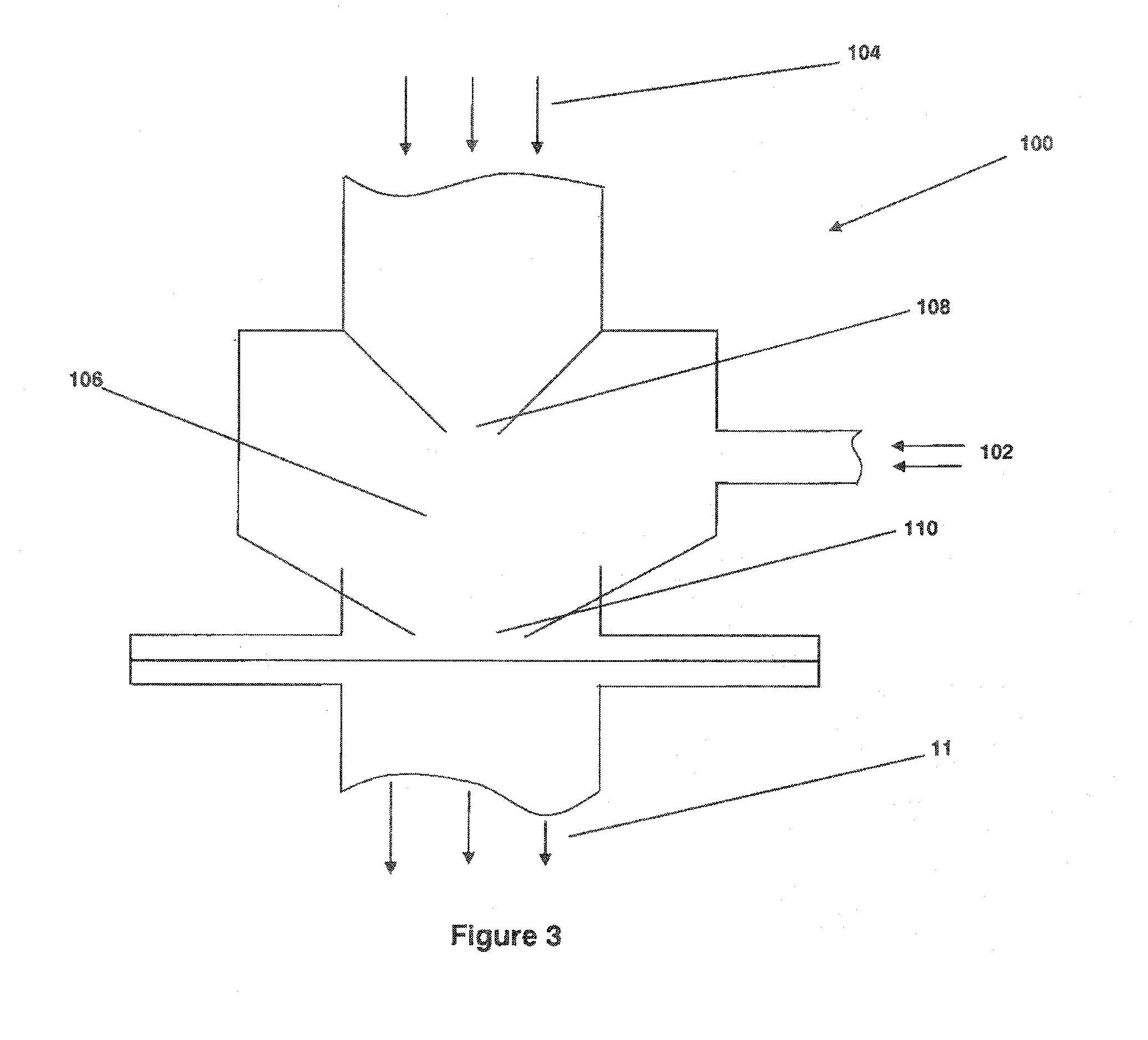Method for Injecting a Feed Gas Stream into a Vertically Extended Column of Liquid
a vertical extension and feed gas technology, applied in biofuels, fermentation, biochemical apparatus and processes, etc., can solve the problems of large quantities of gas required, complicated operation, energy-intensive gas discharging, etc., and achieve the effect of low surface tension, good gas dispersion, and profound effect on gas transfer efficiency
- Summary
- Abstract
- Description
- Claims
- Application Information
AI Technical Summary
Benefits of technology
Problems solved by technology
Method used
Image
Examples
example 1
[0070]This example shows the degree of gas dispersion obtained using water with a gas injector located proximate the top of a fermentation vessel that receives a low pressure gas input stream and produces a gas-liquid dispersion that travels downward for approximately 20 meters in a confined conduit for discharge into the bottom of the vessel. This example uses air as the low pressure gas input for health and safety reasons and measures dissolved oxygen in the liquid within the vessel to monitor gas transfer.
[0071]FIGS. 5 and 6 schematically depict the arrangement of the experimental apparatus for this example. A vessel 60 having a height of 21 meters and a diameter of 1.5 meters retained liquid to height of approximately 19 meters. The gas injector 62 was located at approximately the top of the vessel in a fiberglass reinforced plastic cross 64 having nominal pipe branch sizes of 15 cm×15 cm×15 cm×10 cm. A top pipe branch 66 of the cross having a 15 cm diameter retained the gas inj...
example 2
[0075]This example shows the feasibility of achieving high gas transfer and good gas dispersion using a gas injector located proximate the top of a fermentation vessel that receives a low pressure gas input stream and produces a gas-liquid dispersion that travels downward for approximately 20 meters in a confined conduit for discharge into the bottom of the vessel. The same test apparatus as depicted by FIGS. 5 and 6 and described in Example 1 was used in this Example 2. The liquid in the vessel and circulating through the system in this Example comprised water amended with approximately 500 mg / L of Ethanol and 500 mg / L of Acetic Acid (Amended Water). The amended water shows the effect of having a liquid product that reduces surface tension in a fermentation liquid. Conditions during the test period included a total liquid depth of 19 meters feet in the vessel, a temperature of 25.3° C. and barometric pressure of 738 mm Hg. Using a primary liquid flow rate of 320 liters per minute a...
PUM
| Property | Measurement | Unit |
|---|---|---|
| hydrostatic pressure | aaaaa | aaaaa |
| pressure | aaaaa | aaaaa |
| distance | aaaaa | aaaaa |
Abstract
Description
Claims
Application Information
 Login to View More
Login to View More - R&D
- Intellectual Property
- Life Sciences
- Materials
- Tech Scout
- Unparalleled Data Quality
- Higher Quality Content
- 60% Fewer Hallucinations
Browse by: Latest US Patents, China's latest patents, Technical Efficacy Thesaurus, Application Domain, Technology Topic, Popular Technical Reports.
© 2025 PatSnap. All rights reserved.Legal|Privacy policy|Modern Slavery Act Transparency Statement|Sitemap|About US| Contact US: help@patsnap.com



